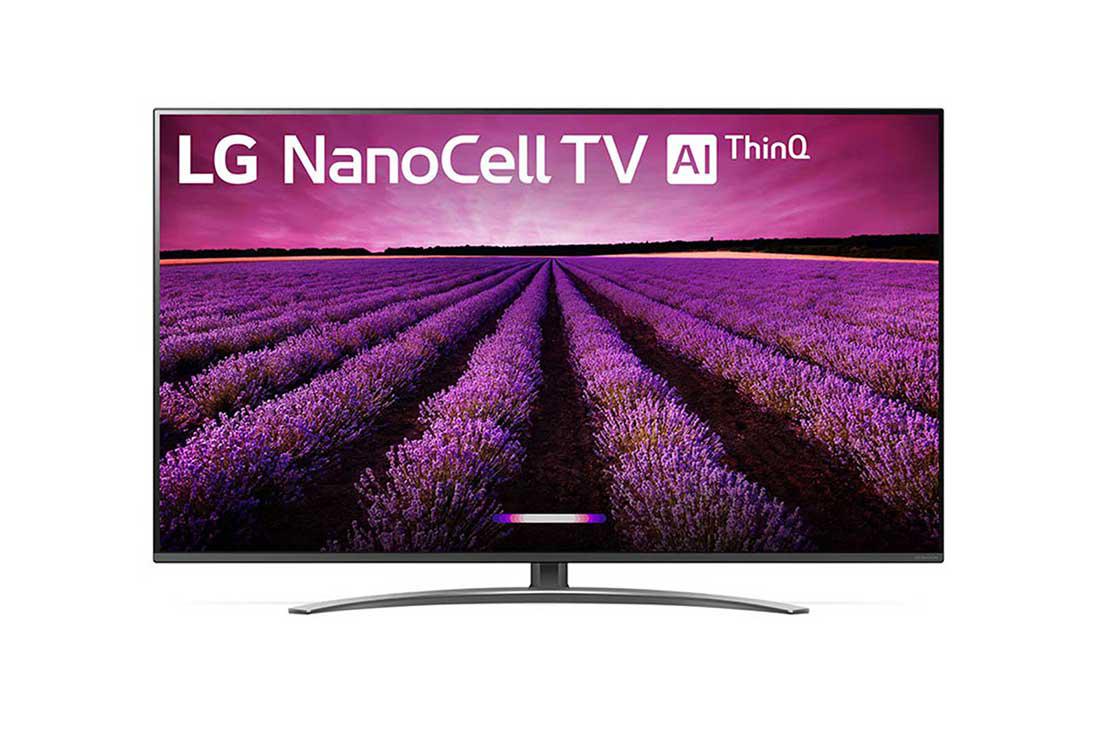The term “NanoCell TV” is one of many TV marketing terms designed to make TVs stand out in a crowded marketplace. This term was coined by LG, so you’ll find it on some LG TVs. Here’s what it actually means.
Nanoparticles and Purified Colors
LG uses NanoCell TV branding to market many of its LED TVs that use the company’s eponymous technology. It touts NanoCell TVs to be capable of offering wider viewing angles and incredible color fidelity. These TVs are sold in both 4K and 8K resolutions and sit below OLED, and QNED Mini LED TVs in the company’s portfolio.
RELATEDWhat Is OLED?The company doesn’t offer too many details about its NanoCell technology. But we do know that it employs a layer of nanoparticles to purify the color output. These nanoparticles, which are spread behind the entire screen, absorb specific wavelengths of light to remove dull color tones. As a result, only the purest of colors appear on the screen, providing a more lifelike and vibrant picture.
Apart from the nanoparticle layer, the LG NanoCell TVs include an In-Plane Switching (IPS) display panel. You’ll mainly find one of two types of panels in modern LCD televisions – IPS and Vertical Alignment (VA). Both have their advantages and disadvantages. For example, an IPS panel provides wide viewing angles, but its native contrast ratio is low, whereas a VA panel has an excellent native contrast ratio but narrow viewing angles.
RELATEDWhat Is OLED?While the nanoparticle layer helps the LG NanoCell TVs produce accurate colors, the IPS panel guarantees excellent viewing angles. These two things are pretty much what makes NanoCell TVs different from other televisions on the market.

Additionally, as mentioned, IPS panels have a poor contrast ratio. To combat this, LG uses full-array local dimming (FALD) in some of its NanoCell TV models to offer deeper black levels and an enhanced contrast ratio. However, FALD is limited to the top-end models. Other NanoCell TVs use either use a software-based contrast enhancement solution, edge-lit local dimming, or no dimming at all. Unfortunately, none of these solutions are as effective as FALD.
RELATED: 6 Mistakes People Make When Buying a TV
Exclusive to LG TVs
As NanoCell is LG’s proprietary technology, NanoCell TVs are only sold by the company. LG could license the technology to other TV manufacturers in the future, but we have seen no indication of that as of 2021.
RELATEDHow to Disable Motion Smoothing on an LG TVIn LG’s TV portfolio, NanoCell TVs aren’t the only televisions to use the technology, though. The company’s QNED Mini LED TVs also use NanoCell technology. So if you like the technology but aren’t sure about other features of NanoCell TVs, you can check the QNED Mini LED TVs as they also use quantum dot and mini-LED technologies to improve the colors and brightness further.
NanoCell TVs vs. QLED TVs
QLED TVs, unlike NanoCell TVs, use a layer of quantum dots or nanocrystals to improve the colors and brightness of the screen. As a result, QLED TVs have vibrant and significantly boosted pictures compared to other TVs. While the NanoCell technology is different from the quantum dot, the result is similar. However, since the QLED TVs mostly use VA panels, the native contrast ratio of QLED TVs is generally better than NanoCell TVs. On the other hand, NanoCell TVs benefit from the excellent viewing angles of IPS panels.
RELATEDOLED vs. QLED, and More: Which TV Should You Buy?So if you are considering between QLED and NanoCell TVs, you have to consider what’s more important to you—contrast ratio or viewing angles—and then look at other TV features and decide.
OLED TVs vs. NanoCell TVs
OLED TVs have a completely different display panel technology than the NanoCell TVs. They don’t need a backlight and have self-emissive pixels. As a result, they have true blacks and a near-infinite contrast ratio. The perfect black levels also help other colors pop on the OLED TVs. The OLEDs also don’t suffer from blooming and other display artifacts that plague LED-backlit LCD TVs and have excellent viewing angles. But OLED TVs are not perfect.
RELATEDOLED Screen Burn-In: How Worried Should You Be?They are significantly less bright than LED TVs, making them a poor choice for well-lit rooms. And, they are expensive and can suffer display burn-in. That said, the positives of OLED TVs mostly outweigh their negatives, so they are generally better than NanoCell TVs. Take a look at our guide to the best TVs you can buy for more pointers.
The Best TVs of 2022
Best TV OverallLG C1
Amazon$1185.99$1499.99 Save 21%
Hisense U7G
Amazon$799.58 $1099.99 Save 27%
Samsung QN900A 8K
AmazonBest Gaming TVLG G1
Amazon$1396.99
Sony A90J
Amazon$2198.00
TCL 6-Series R635
Amazon$698.00




